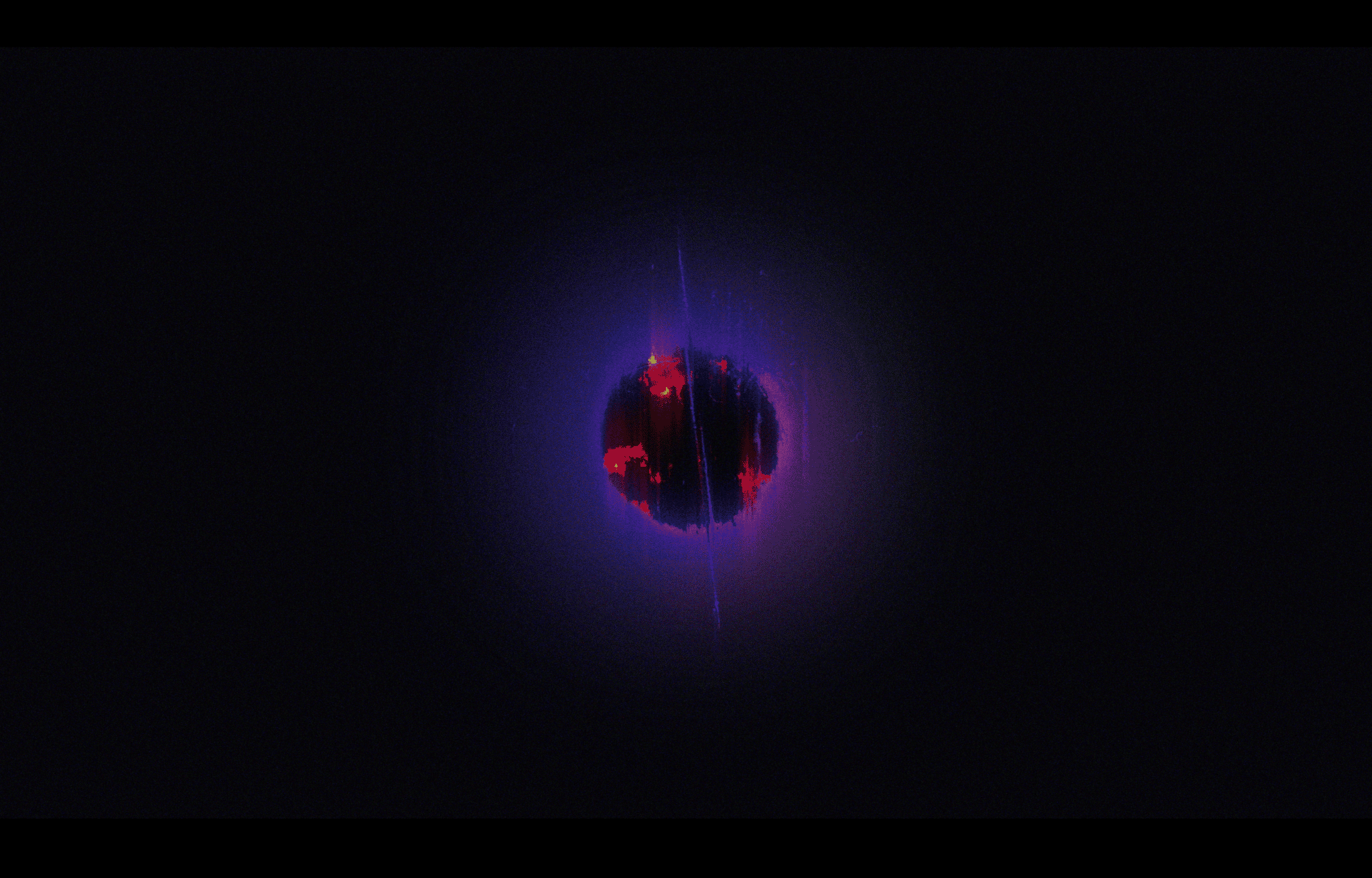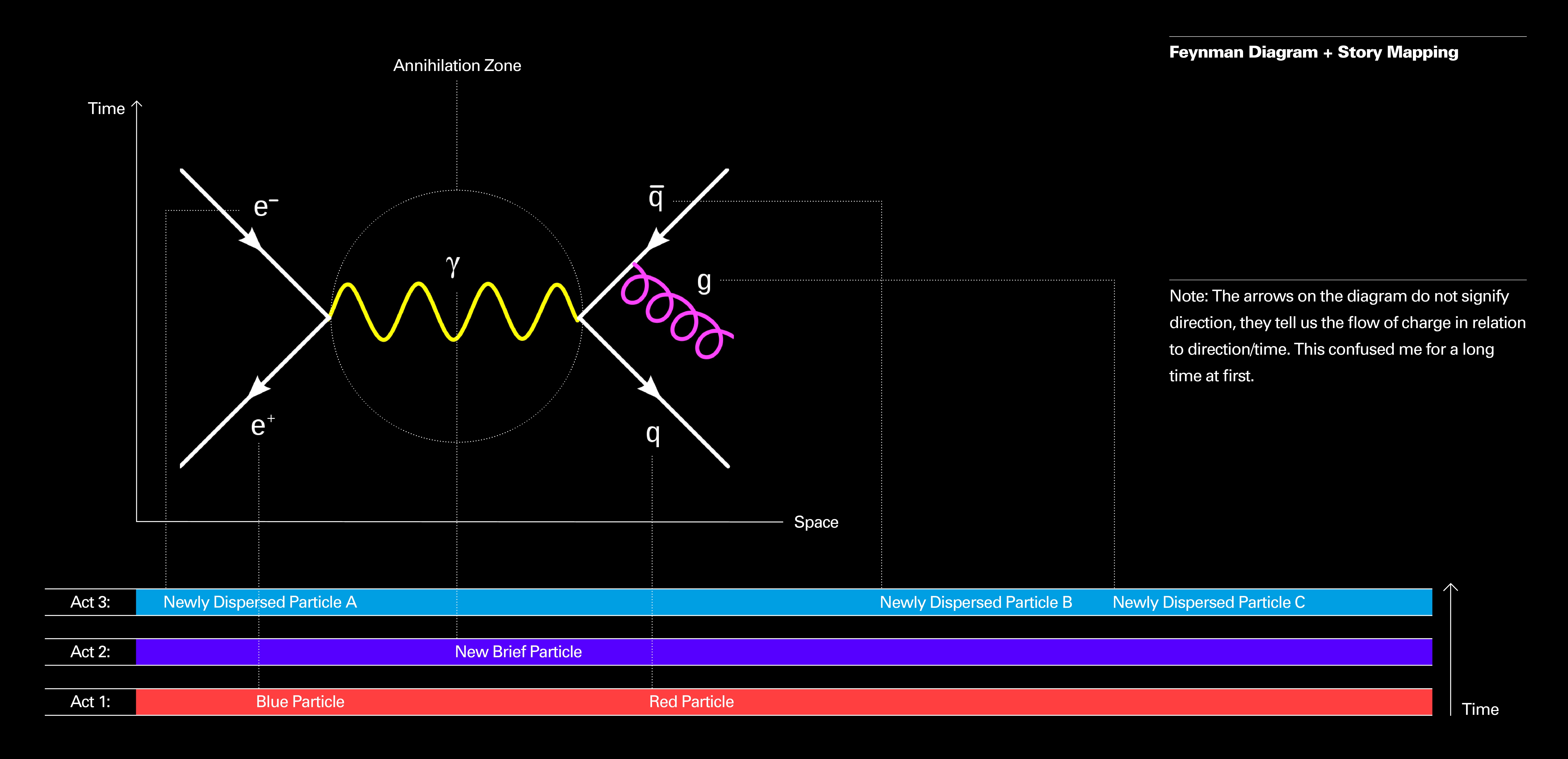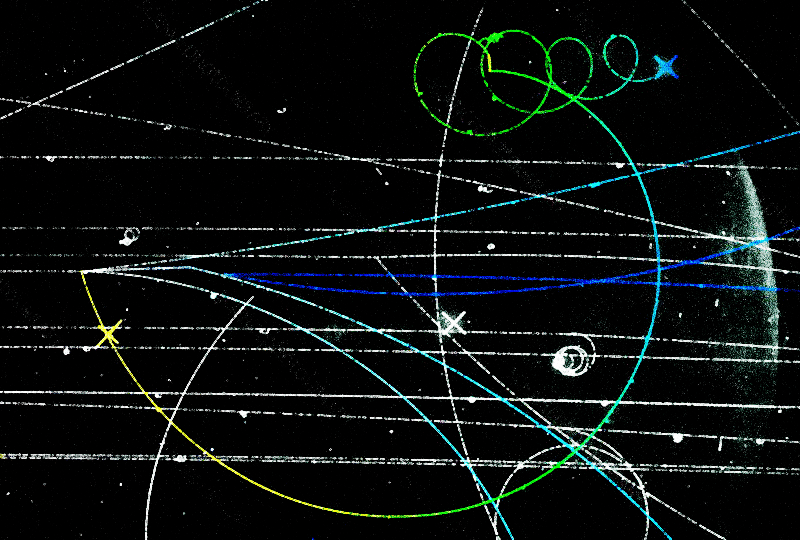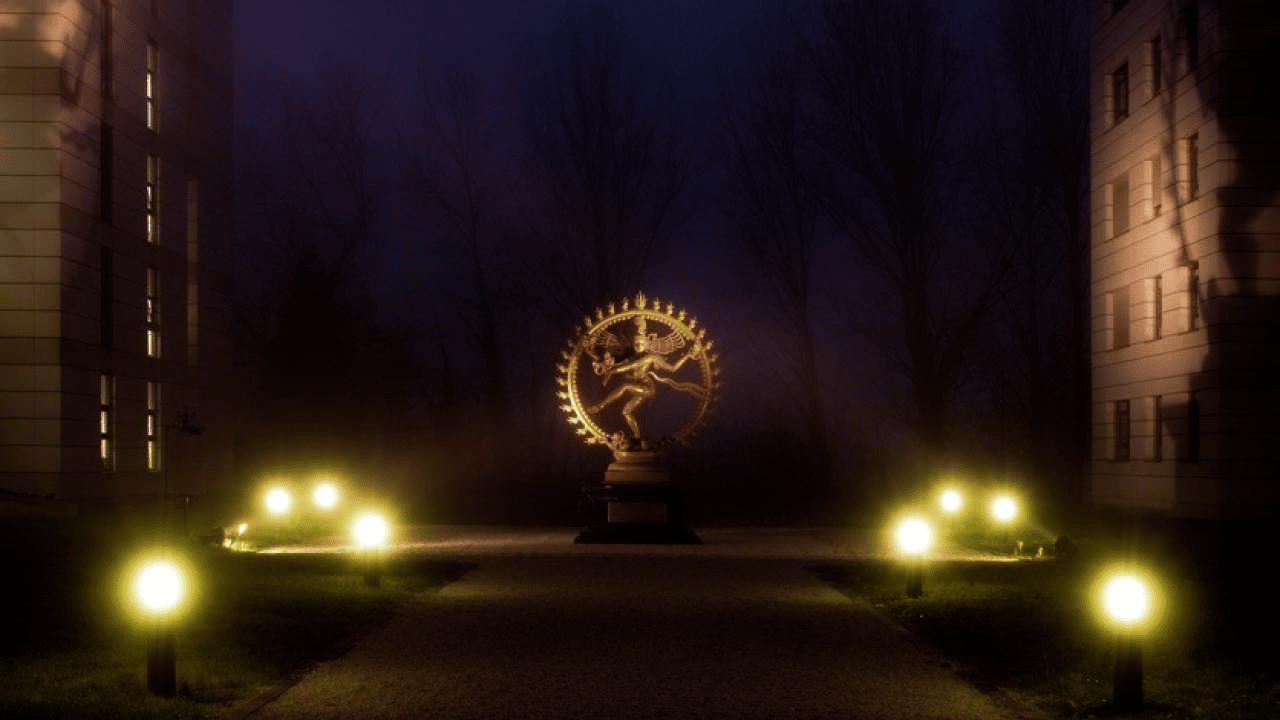Story
When a particle collides with its antiparticle, the two disappear in what’s known as annihilation. But briefly, in its place, an entirely new particle is born (or transmuted), out of that it will decay and a new set of distinctly different particles are birthed.
Physicist Kevin Black states this would be the equivalent, of two cars colliding, vanishing on impact, a bicycle appears, and then explodes into kitchen utensils. Driving home the point, the new particles are fundamentally new and different; no information is carried across in the new creations.
The story I wanted to tell was the eternal dance between creation and destruction and thus plotted two tendencies of stability and instability across the duration.
An initial ballet of an orbit (which is not something that is likely to happen in real life, this just proved a better introduction to the idea of two opposites (particle and antiparticle)), then the crushing of the two particles exchanging colour (signifying two opposites meeting) to then disappear into a void of black (absence) where a shining ‘second coming’ briefly appears (creation) to then once again decay, become unstable and burst (transform) into four or five other smaller particles to be washed off beyond the visible canvas; the story thus continuing off-screen.



